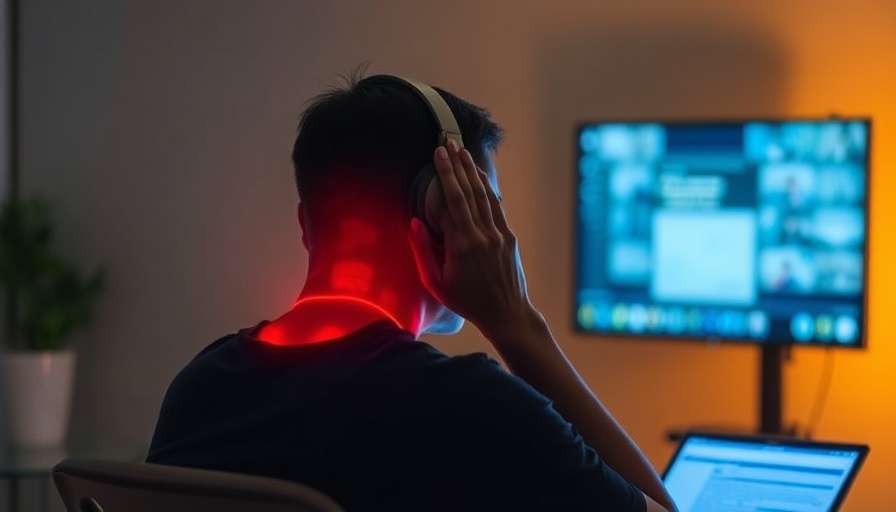
Understanding the Connection Between Screen Time and Neck Pain
In an age dominated by technology, our screens have become integral to daily life. However, the longer we are glued to them, the more we invite physical challenges, notably neck pain. Increasingly, research links excessive screen time and prolonged sitting to discomfort and musculoskeletal problems, strikingly emphasizing the need for awareness and action.
Why Posture Matters: The Role of Ergonomics
Proper posture while using screens is crucial in mitigating neck pain. Slouching or straining forward not only places undue stress on the cervical spine but can lead to muscle fatigue and discomfort. Ergonomic setups—like adjusting chair height, screen level, and using supportive equipment—can significantly reduce physical strain. It’s essential to invest time in learning about ergonomic principles, especially for those who work in office environments where screens are a constant presence.
Strategies to Combat Neck Pain: Move and Stretch
Incorporating movement into our daily routines is vital. Simple stretches and micro-movements can be performed throughout the day, particularly in high-screen time scenarios. Studies show that taking breaks every 30 minutes can reduce strain and promote better circulation. Just a minute or two of stretching or walking can make a world of difference in maintaining neck health.
The Psychological Factor: Managing Stress and Its Impact
Interestingly, stress levels also play a role in our perception of pain. High stress can lead to muscle tension and exacerbate discomfort. Techniques such as mindfulness and relaxation exercises can not only improve overall mental health but also alleviate physical symptoms. Connecting physical movement with mental wellness can create a more holistic approach to managing neck pain effectively.
Future Considerations:Screen Time Decoding
As lifestyles evolve and mobility increases, the understanding of how screen time affects neck health will continue to develop. Predictive insights reveal that wearables and smart technology could play a role in monitoring our posture, suggesting adjustments and encouraging movement. Keeping an eye on technological advancements will empower us to manage our health proactively.
Final Thoughts: Taking Action for a Healthier Life
Being proactive about our neck health in this digital era is essential. Recognizing the symptoms of neck pain early and implementing changes can lead to a more comfortable and healthier relationship with technology. Inspirationally, by sharing our experiences and solutions, we can cultivate a community of understanding that prioritizes health and wellness above all.
 Add Row
Add Row  Add
Add 



Write A Comment